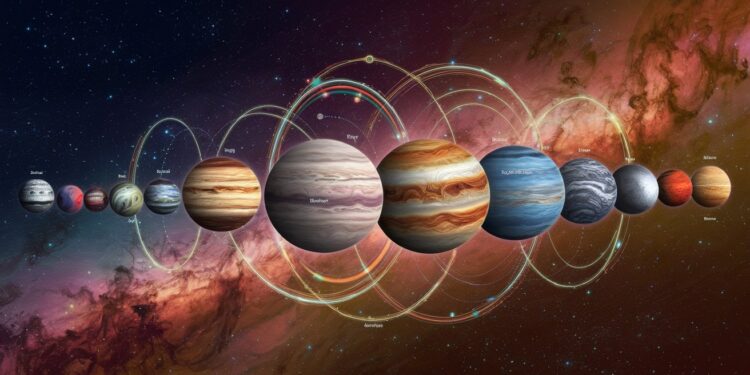Astronomy enthusiasts and casual stargazers alike are in for a remarkable treat this month as a rare planetary alignment, known as a “planet parade”, graces our night skies. In an incredible celestial coincidence, most of the planets in our solar system will be visible at the same time, lined up together above the horizon. This cosmic spectacle is not to be missed!
A Once-in-a-Lifetime Planetary Alignment
So what exactly is a planetary alignment and why is this one so special? Dr Rebecca Allen, an astrophysicist and co-director of Swinburne University’s space technology institute, explains:
“They happen to all be in their orbits on the same side of our sun, within the same degrees in our sky, so that we can see them. That is special.”
– Dr Rebecca Allen, Astrophysicist
While the planets in our solar system are always moving in their respective orbits, it’s quite rare for so many of them to appear clustered together from our vantage point on Earth. This planetary alignment is made even more exceptional by the inclusion of the outer planets Neptune and Uranus, which are usually too faint to see without the aid of binoculars or a telescope.
When and Where to See the Planet Parade
While the planets will be visible throughout January, experts say the alignment will be at its most striking around January 21st. Con Stoitsis from the Astronomical Society of Victoria notes that around this date, stargazers can easily spot the planetary lineup even without any special equipment:
“You can’t miss them. Facing north, Venus and Saturn would be to the left, Jupiter to the right, followed by Mars in brilliant red a couple of hours later.”
– Con Stoitsis, Astronomical Society of Victoria
Of course, those with binoculars or a telescope will be treated to an even more spectacular view. Saturn’s majestic rings will be visible edge-on like a thin sliver, while Jupiter’s colorful cloud bands and largest moons can be spotted hovering near the famous Orion constellation. The red planet Mars will also put on quite a show, appearing especially bright and detailed thanks to favorable opposition positioning.
Tips for Observing the Alignment
To make the most of this rare astronomical event, here are some expert tips:
- Find a viewing spot with a clear, unobstructed view of the horizon
- Start observing in the evening after sunset, ideally around January 21st
- Use a sky map app to help locate and identify the planets
- If using a telescope, let your eyes adjust to the darkness for better viewing
- Look for other night sky sights like the Orion constellation and passing satellites
According to Dr Allen, this planetary alignment is especially timely as it coincides with the summer school holidays in the southern hemisphere. “It’s a chance where you can actually use binoculars and see pretty much all of the planets this month. Take the kids out.” With the moon waning by late January, conditions will be optimal for planet-spotting.
A Cosmic Perspective
Planetary alignments like this one remind us of the vast scale and precise clockwork of our solar system. Dr Allen reflects on how this spectacle highlights our place in the cosmos:
“We’re very fortunate, all of us on Earth, that we are going to be seeing this alignment happen in some of the most famous and easily seen summer constellations…It’s about perspective. All of these planets are vast distances from us and from each other.”
– Dr Rebecca Allen, Astrophysicist
So mark your calendars and set your sights on the sky this January. A grand planetary parade awaits – a chance to marvel at the magnificent clockwork of our celestial neighborhood and ponder our place among the stars. In a universe of wonders, this is one cosmic show you surely won’t want to miss.








